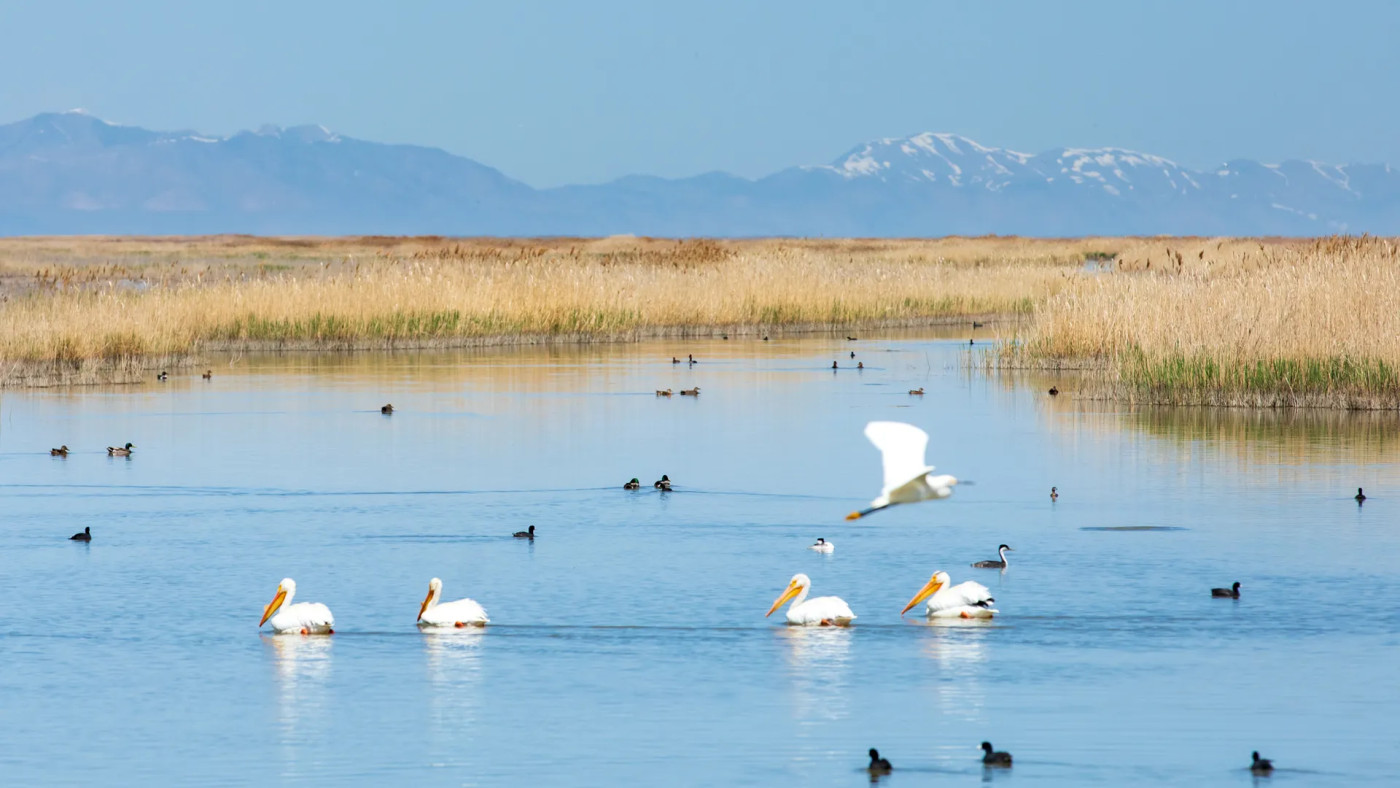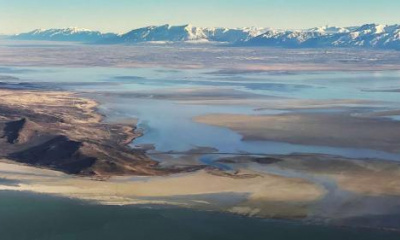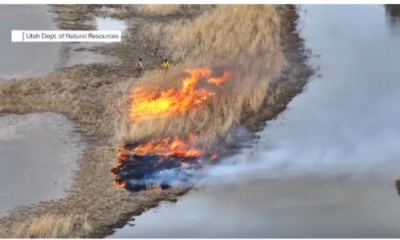Utah's record snowpack is already having outsized impacts on migratory shorebirds and insects in and around the Great Salt Lake.
Why it matters: The Great Salt Lake serves as a critical food source for millions of birds that pass through the body of water during long migrations each year, per the Utah Division of Wildlife Resources.
Context: Last year's drought conditions put the Great Salt Lake's ecosystem on the brink of collapse.
- The lake's levels reached an all-time low in November, as salinity rose to nearly 19%.
- The high saline levels helped wipe out many brine flies, which serve as a critical food source for migratory birds.
What's happening: Seven months later, thanks to an unusually wet period, the Great Salt Lake's levels have risen more than 5 feet, reducing the water's salinity to 14% as of May 1, per the U.S. Geological Survey.
- This is why anyone who's visited the area this spring may have noticed brine flies buzzing about in full force.
- Ben Abbott, an assistant professor of ecosystem ecology at Brigham Young University, calls the insects' return an important indicator of the health of the lake and ecosystem.
By the numbers: A survey conducted in late April counted more than 84,000 shorebirds at four different Utah bodies of water, including the Great Salt Lake, Utah Lake, Fish Springs National Wildlife Refuge and the Amalga Barrens Sanctuary.
- The Utah Division of Wildlife Resources, Sageland Collaborative, the U.S. Fish and Wildlife Service, Tracy Aviary, National Audubon Society Audubon Chapters in Utah and Point Blue Conservation Science were involved in the survey.
- Researchers plan to use that figure as a baseline for future counts.
-
Yes, but: Abbott said the lake levels are not yet where they need to be. If they rise another 5 feet, he predicts there'd be a more substantial increase in wildlife habitat.
State of play: This time of year, a variety of birds — great blue herons, snowy egrets and American avocets — can be observed in abundance in places like Farmington Bay, one section of the Great Salt Lake's wetlands.
What they're saying: "The fact that we're able to see the short-term recovery of the ecosystem because of weather variability, and also that the public and our policymakers are staying so focused on conservation, I think, is a really positive sign," Abbott said.
This story was written in collaboration with KSL.com's Carter Williams.








